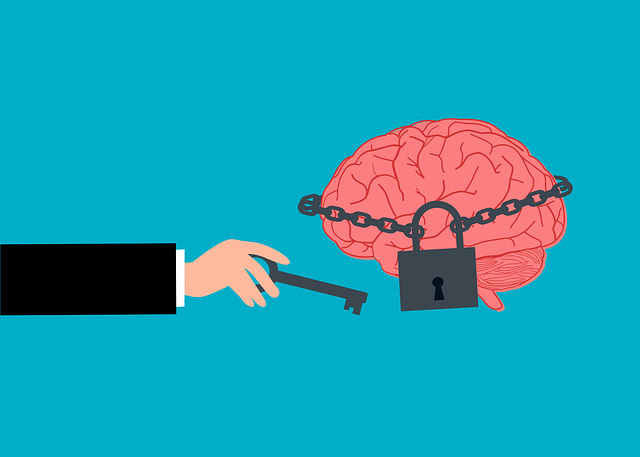Therapy for adolescent teens affected by domestic violence requires a multifaceted approach centered around Risk, Frequency, and Motivation (RFM). This involves identifying household patterns, assessing violent incident frequency, and integrating mental illness stigma reduction. Tailored interventions focus on building resilience through self-esteem improvement, community outreach, and creative arts therapies. Cultural sensitivity ensures interventions meet diverse teen needs, empowering them to process trauma, develop healthy coping mechanisms, and thrive despite their circumstances. The RFM model, combined with safe spaces and journaling exercises, fosters emotional healing and enhanced stress management skills for these vulnerable individuals.
Resilience is a powerful tool for adolescent teens facing challenges, especially those affected by domestic violence. This article explores the implementation of RFM (Resilience, Flexibility, and Mastery), a therapeutic approach designed to enhance youth resilience. We delve into the connection between domestic violence and its impact on teens, offering insights into identifying risks and strengths through comprehensive assessments. By designing effective exercises and creating supportive environments, we can empower teens with the skills to heal and thrive, providing them with valuable resources for long-term well-being and therapy.
- Understanding RFM and Its Impact on Adolescent Teens
- The Connection Between Domestic Violence and Youth Resilience
- Identifying Risks and Strengths: A Comprehensive Assessment
- Designing Effective Resilience-Building Exercises
- Implementing RFM in Supportive Environments for Teen Healing
Understanding RFM and Its Impact on Adolescent Teens

Adolescent teens are a vulnerable population when it comes to domestic violence and its long-lasting effects. Understanding Risk, Frequency, and Motivation (RFM) is crucial in this context. RFM analysis helps identify patterns of behavior within households, providing insights into potential risks and stressors that teens may face. By assessing the frequency and severity of violent incidents, as well as the underlying motivations, therapists can tailor interventions for better support.
This approach is essential in therapy for adolescent teens, as it enables professionals to address not only the immediate symptoms but also the deep-rooted causes. Mental illness stigma reduction efforts can be integrated into these sessions, fostering self-awareness exercises that help teens process trauma and develop effective stress reduction methods. Such proactive measures are vital in building resilience and promoting overall well-being among this age group.
The Connection Between Domestic Violence and Youth Resilience

The impact of domestic violence on adolescents is profound and can shape their future in numerous ways. When young minds are exposed to such traumatic environments, it often leads to a range of emotional and psychological challenges. Building resilience in these vulnerable individuals is a critical step towards healing and personal growth. Resilience, the ability to adapt and bounce back from adversity, plays a pivotal role in helping teens navigate their experiences and foster a sense of self-worth.
Therapy for adolescent teens facing domestic violence can be transformative when tailored exercises are implemented to strengthen their resilience. Self-esteem improvement techniques, for instance, empower teens to challenge negative beliefs and perceptions, fostering a positive self-image. Community outreach program implementation also offers support networks, addressing social isolation often experienced by victims of domestic violence. Cultural sensitivity in mental healthcare practice is essential, ensuring that interventions are tailored to the unique needs of diverse teen populations, allowing them to heal and thrive despite their circumstances.
Identifying Risks and Strengths: A Comprehensive Assessment

Identifying Risks and Strengths is a crucial step in implementing RFM (Resilience, Flexibility, and Mastery) exercises for adolescent teens who have experienced domestic violence. This process involves a comprehensive assessment to uncover both vulnerabilities and inherent strengths within individuals. By thoroughly evaluating their emotional responses, coping mechanisms, and past experiences, therapists can tailor interventions that foster emotional healing processes.
This assessment encourages adolescents to reflect on their ability to adapt and bounce back from challenging situations, including the trauma of domestic violence. It also highlights their unique resources and skills, which can be leveraged for building resilience and implementing effective stress reduction methods. Ultimately, this holistic approach contributes to a confidence boosting journey, empowering teens to navigate their lives with greater equanimity and self-assurance.
Designing Effective Resilience-Building Exercises

Resilience-building exercises should be tailored to meet the unique needs and challenges faced by adolescent teens who have experienced domestic violence. Effective therapy for this demographic often involves creative, engaging activities that encourage emotional expression and coping strategies. For instance, group discussions facilitated by mental health professionals can foster a sense of community and peer support, helping teens process their trauma in a safe environment. This approach aligns with the broader goals of risk management planning for mental health professionals, ensuring they provide culturally competent care that addresses the specific needs of this vulnerable population.
Integrating mental health awareness into resilience-building programs is essential. Exercises can include mindfulness practices, such as guided meditation or yoga, to promote emotional regulation and stress reduction. Additionally, creative arts therapies like art, music, or dance can offer outlets for expression and help teens process their experiences in unique ways. These activities not only enhance mental well-being but also contribute to the overall development of healthy coping mechanisms, which are crucial components of resilience-building for adolescents who have witnessed domestic violence.
Implementing RFM in Supportive Environments for Teen Healing

Implementing RFM (Resilience, Flexibility, and Mastery) in supportive environments can significantly aid in teen healing, especially for those recovering from domestic violence. This therapeutic approach focuses on fostering mental wellness by teaching adolescents coping skills development that enhances their ability to navigate stress management effectively. Through the incorporation of activities like journaling exercises within a safe space, teens are guided to explore their emotions and thoughts, promoting self-awareness and personal growth.
The RFM model encourages flexibility in thinking and behavior, equipping young individuals with tools to adapt to challenging situations. By engaging in regular mental wellness journaling and other guidance exercises, adolescent victims of domestic violence can build mastery over their emotional responses, moving towards a state of resilience where they can process trauma, reduce anxiety, and develop healthy coping mechanisms.
Resilience is a powerful tool for healing, especially among adolescent teens facing the aftermath of domestic violence. By implementing RFM (Risk, Strengths, and Factors Motivating) assessments and tailored resilience-building exercises, we can create supportive environments that foster recovery. This approach not only identifies risks but also leverages strengths to enhance coping mechanisms, ultimately empowering teens to navigate challenges and thrive in the face of adversity. Incorporating these strategies into therapy for adolescent teens exposed to domestic violence is a game-changer, offering them the resources they need to build a brighter future.














